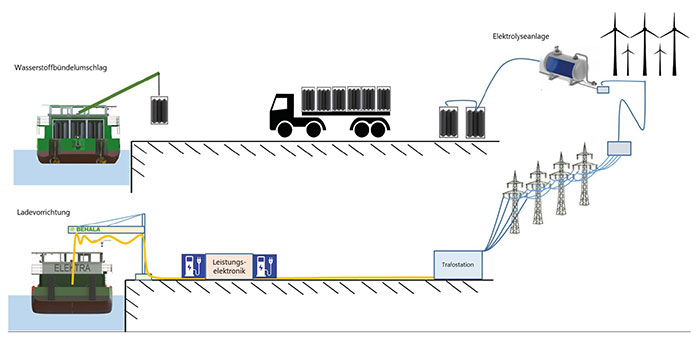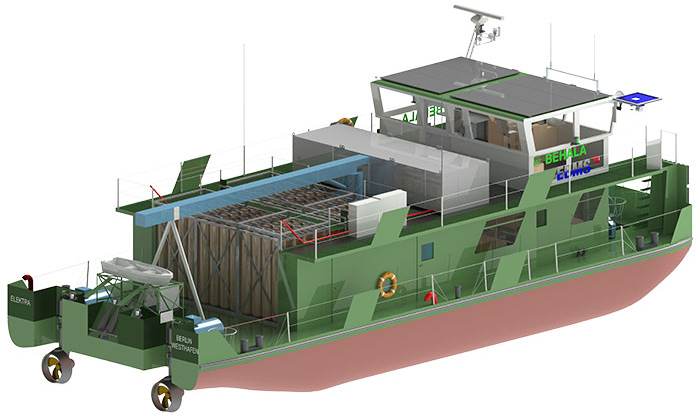
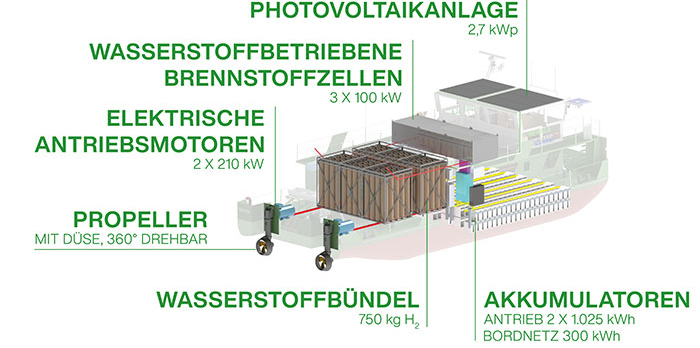
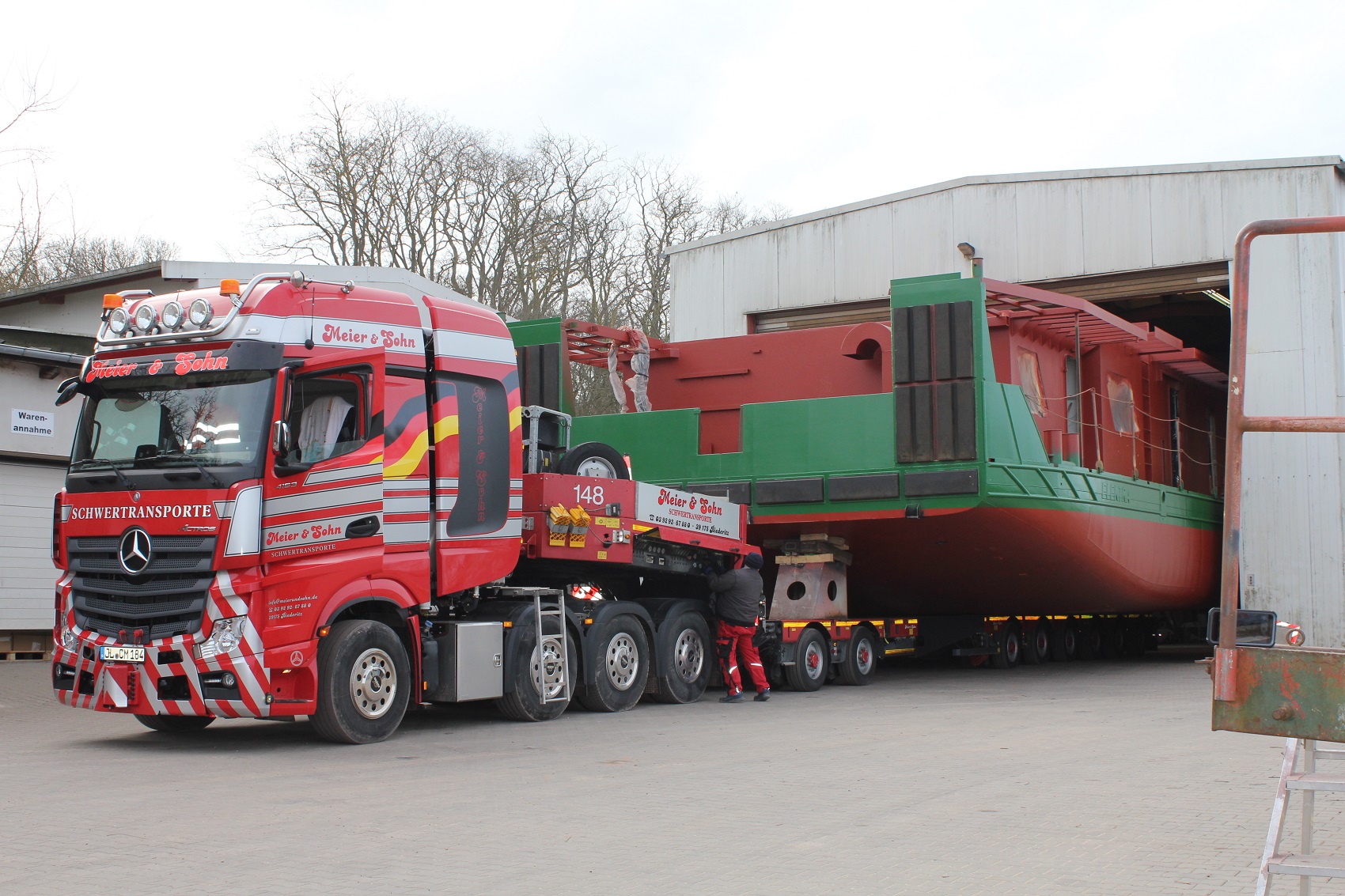
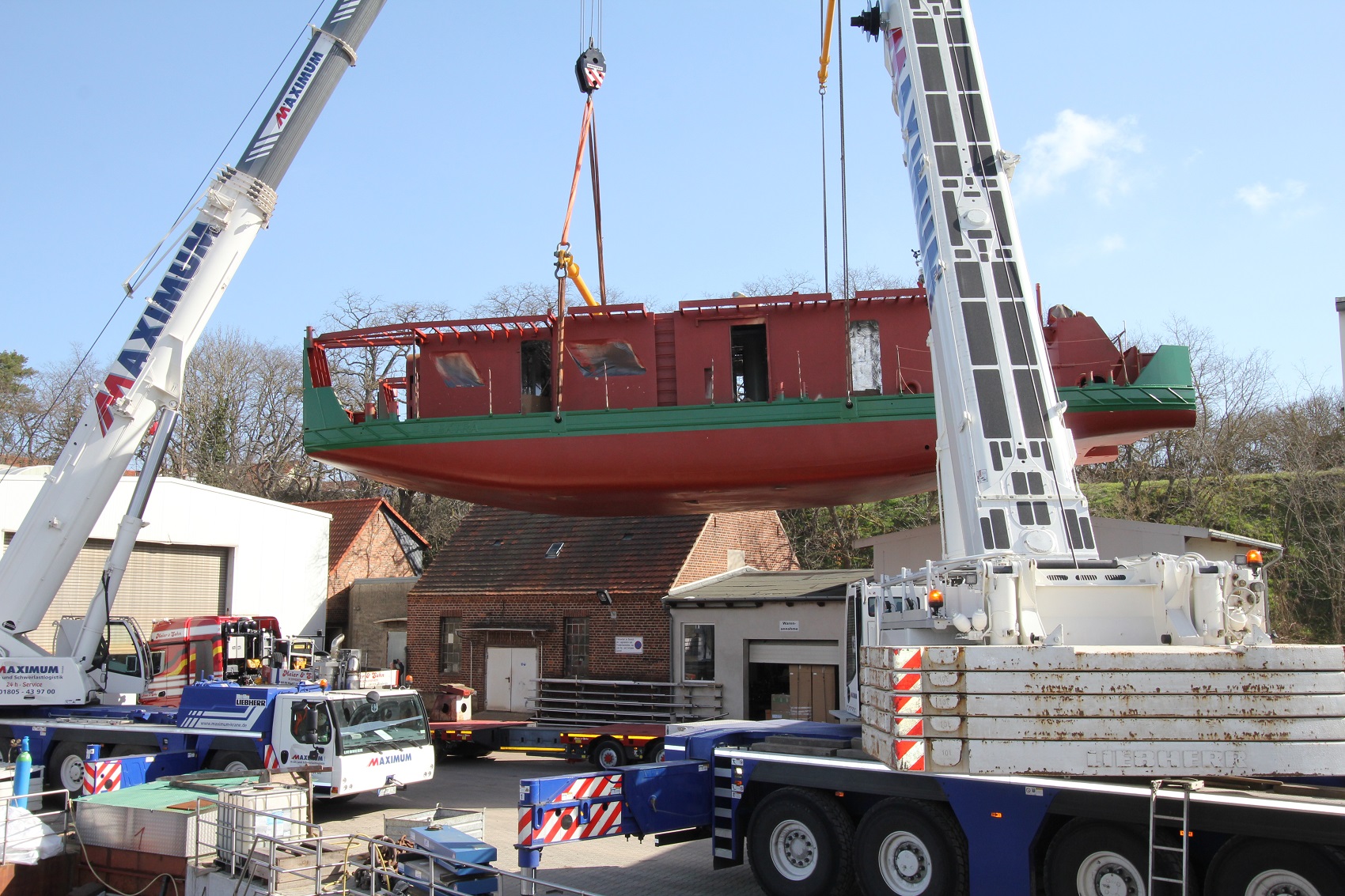
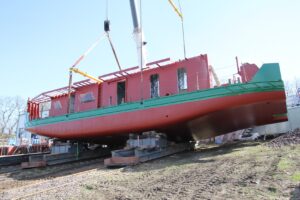
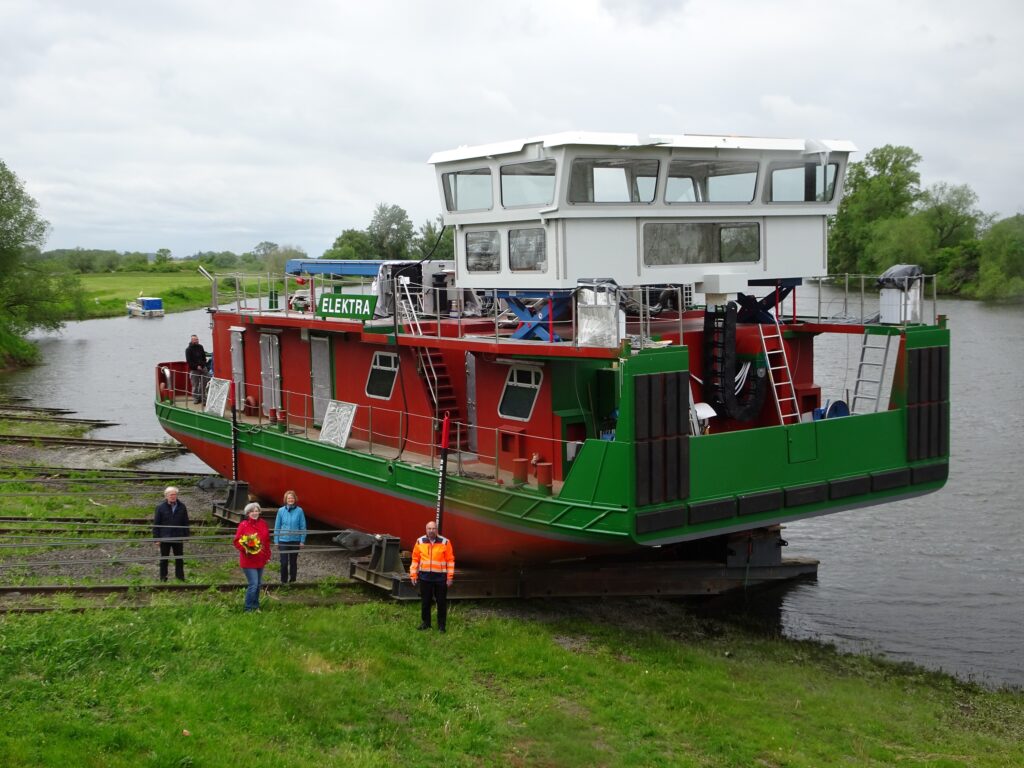
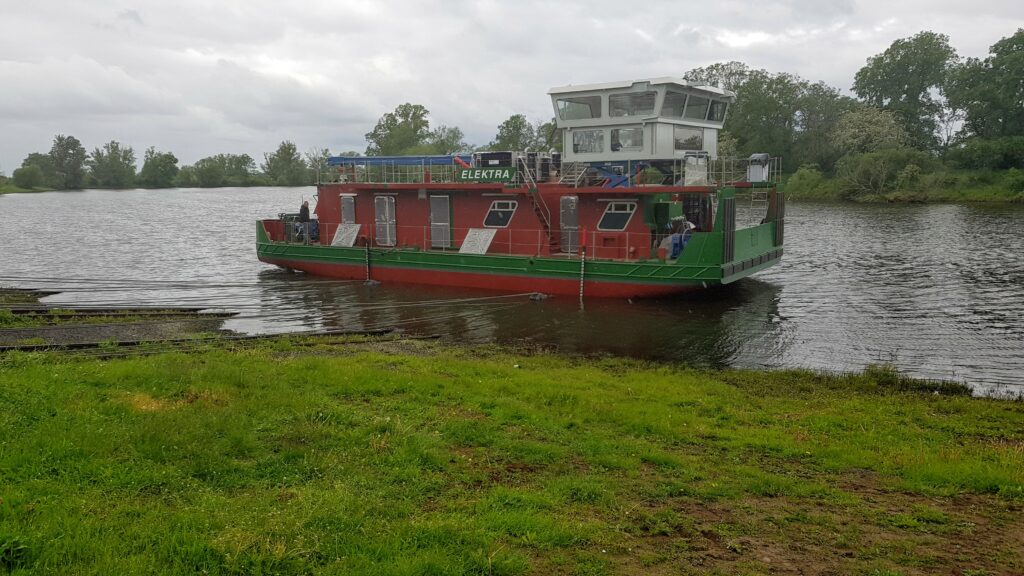

Topic
Flagship project: ELEKTRA
The focus was firmly on Germany’s climate policy goals during the development of the ELEKTRA canal push boat, whose technical and economic feasibility was tested by BEHALA and the TU Berlin. The aim was to incorporate inland vessels as a means of transportation in the logistical problem. The idea centred upon an emission-free hybrid/electrically driven experimental vehicle for use in the Berlin-Brandenburg region and for commercial operation between Berlin and Hamburg.
ELEKTRA impresses thanks to its unique main drive and the energy supply on board while freight transport. As an emission-free working vessel, it acts as a role model with respect to environmental requirements in sensitive regions. After all, the energy concept can be transferred to freight and passenger shipping as well as boating and is therefore forward-looking.
milestone at 22 March 2021
…out of the hall .… onto the slipway…
Next milestone:
launching at 27 May 2021
Shortly before launching, the „Institut für Talententwicklung“ took a closer look at the project and made this film.
July 2021: Supply of ELEKTRA with green hydrogen contractually secured
Further information:
press release_ELEKTRA_Stapellauf_27.05.2021
press release_ELEKTRA_Kiellegung_05.11.2019
Elektra – The film (TU Berlin)


